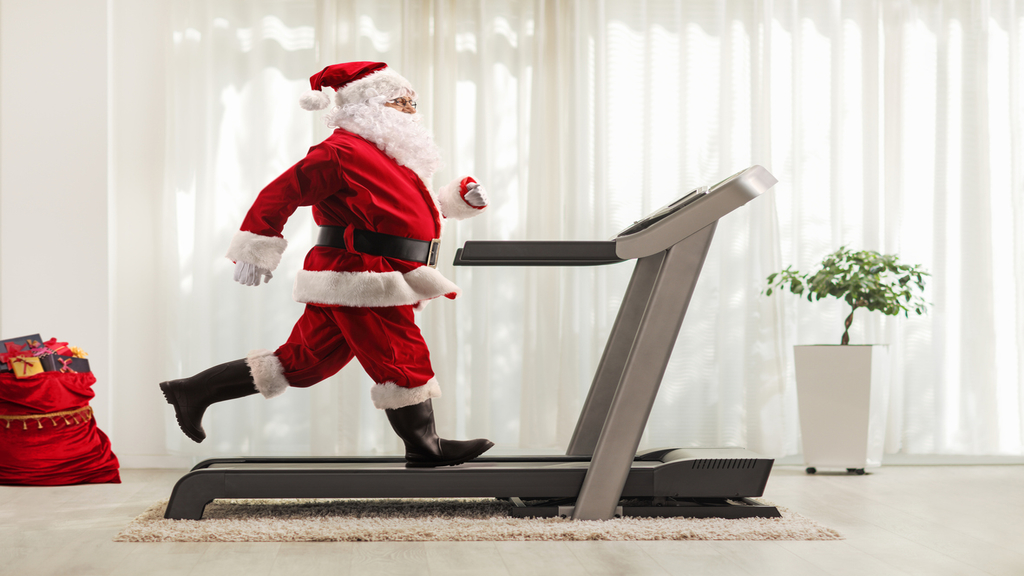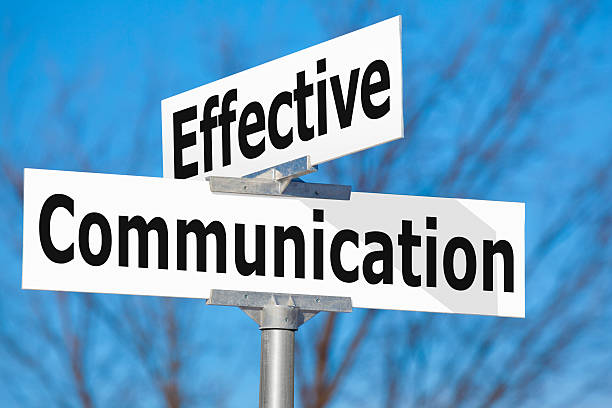Elevate Your Workplace
March 2024 by Sharon Dillard
 In a job market flooded with Help Wanted signs, employers face the tough challenge of securing and retaining top talent amidst the aftermath of our economy’s two-year rebound and significant employment shifts. With more options available, workers are rethinking what they value in a job, from where they work to what they’re paid. It’s crucial for employers to step up and highlight not only the job roles and work environment but also the strengths of the company to attract today’s job seekers. So, how can you make your workplace a magnet for talent? Here are some practical tips to guide you.
In a job market flooded with Help Wanted signs, employers face the tough challenge of securing and retaining top talent amidst the aftermath of our economy’s two-year rebound and significant employment shifts. With more options available, workers are rethinking what they value in a job, from where they work to what they’re paid. It’s crucial for employers to step up and highlight not only the job roles and work environment but also the strengths of the company to attract today’s job seekers. So, how can you make your workplace a magnet for talent? Here are some practical tips to guide you.
Create the culture. CEOs are now talking more about equity, inclusion, and fairness, according to the Harvard Business Review. Employees want to be part of a company that prioritizes these values, too. Creating an environment where everyone feels welcome, regardless of skin color, gender, or sexual orientation, is essential.
Fuel your workplace with positivity. Are your employees truly engaged? Do you fully embrace remote, flexible, or hybrid working environments? Are your employees happy working for you? Consider ways to show your appreciation for them, such as catered lunches or after-hours events (dinners, ballgames, movie nights). And if you’re unsure how to achieve this, ask your current staff — they’ll have plenty of ideas.
Focus on skills, not just experience. Hiring someone who can quickly adapt and excel means focusing more on skills and less on the resume. Today’s perfect candidates might not have the “perfect” resume. Look beyond employment gaps, education, and years of experience – seek individuals who are eager to learn, adapt, and positively influence the workplace while having the necessary skills to excel in the role.
Revamp your compensation strategy. Looking to stand out in attracting and keeping employees? Think beyond traditional compensation. While some may prioritize a higher salary or hiring bonus, others value generous time off, health insurance, or retirement packages. Offering any or all of these perks can make your company more appealing.
Prioritize employee wellbeing. With a renewed focus post-pandemic, many companies have introduced or expanded benefits and perks aimed at supporting both physical and mental health. From gym memberships and mental health days to programs promoting work/life balance and parental leave, these efforts highlight a commitment to employee wellbeing and reducing burnout and stress.
Upgrade your tech. There’s no excuse for outdated technology, particularly with tools that encourage collaboration and remote work (i.e., Microsoft Teams, Google Workspace, Microsoft 365, Zoom, Dropbox). Over 85% of job seekers consider technology when evaluating a potential job. Stay current and provide training on the latest tools and systems.
Reward your flock, watch them soar. As the saying goes, “birds of a feather flock together” — happy employees attract more like-minded individuals, after all. Your current staff can be your company’s best advertisement. If they’re incentivized to refer others like themselves, it can make all the difference. Consider offering a referral bonus or other signs of appreciation when a current employee refers a new hire. It’s a simple way to encourage your team and strengthen your workforce.
As employers, let’s refine our approach to hiring and keeping talent, discovering effective ways to elevate our workplaces, enrich the employee experience, and become highly desirable companies to work for. It’s time to make our mark. Just sayin’.
Sharon Dillard is the award-winning CEO of Get A Grip Inc., a national franchise kitchen and bathroom resurfacing company based in Albuquerque, New Mexico.

Holiday Recovery Made Simple
January 2024 by Sharon Dillard
 The holidays stress some of us out, but for me, it’s the post-holiday weeks that really get to me. The festive buzz is over, and it’s back to tackling projects we postponed. When anxiety about the future or past troubles me, I recall advice from a wise horse trainer: Breathe. Stay in the moment—right here, right now.
The holidays stress some of us out, but for me, it’s the post-holiday weeks that really get to me. The festive buzz is over, and it’s back to tackling projects we postponed. When anxiety about the future or past troubles me, I recall advice from a wise horse trainer: Breathe. Stay in the moment—right here, right now.
Living in an age of distractions, constant technology disrupts our focus on the future. At work, I daydream about vacation, yet on vacation, I fret about the mounting workload back at my desk. Appreciating the present is a challenge; our minds, like monkeys, swing from thought to thought. Phones and devices only add to the chaos.
Here are a few post-holiday tips that help me stay present:
Recharge: Sick of feeling exhausted? Our bodies need energy to face challenges, and stress saps it away. A gym membership could help, but I often end up yawning on the machines. My solution? Spin class! With a set time and supportive companions, it’s the perfect boost. If group classes aren’t your style and you’re in a chilly locale like me (thanks, Albuquerque), try walking on an indoor track. Local high schools or community centers might even offer it for free – check out your options!
Renew: So, let’s talk about sleep—it’s kind of like the VIP pass to recovering, right? I’ve found that getting into a cozy routine of hitting the hay and waking up around the same time, even on lazy weekends, has been my secret weapon for renewing that energy. It’s like a subtle yet powerful reboot for the day.
Breathe: Ever notice how we can totally forget to do something as basic as, well, breathing? It’s kind of funny, but seriously, it works wonders! Take a sec—right now if you want—and take a slow inhale. Then let it out. These deep breaths help you stay focused and centered. Throw in some deep breaths during your commute, whether you’re cruising to work or running errands. And hey, don’t forget to pull out this trick when you find yourself in some wild or unfamiliar situation—it helps release the fear that comes along with it.
Unplug: Once a week, I make it a mission to ditch the screens and immerse myself in a good book instead of binge-watching TV. Picture this: my favorite classical music playing softly in the background, creating the perfect soundtrack to my tech-free day. Welcome to my “Sanity Sundays.” It’s like a mental reset button, helping me refocus and gather my thoughts for the week ahead.
Trade-Off: Now, here’s my game plan for tackling the office chaos. Channeling the vibe of “Sanity Sundays,” I make my Fridays escape. I take off on Friday, then I swing back into the office on Sundays, tripling my productivity. It’s a savvy trade-off, keeping me sane and setting the stage for a week of peak performance.
Multi-tasking: Ever catch onto the irony that the person claiming to juggle twenty things is usually not in the best mood? Trust me, been there. Trying to do ten things at once turns into an internal battle for me. I’d rather tackle one thing at a time, fully present and, of course, happy, than juggle ten things and risk forgetting I’m doing any of them—or worse, doing them all poorly.
Flow: Acceptance is key—we can’t control every detail. It can be tough to ride the waves of uncertainty, but when it happens, I take a breath and remind myself that others need the freedom and trust to handle their roles. If the end result is solid, it’s time to ditch the micromanaging and let the flow take its course.
Embrace the moment: According to General Electric CEO Jeff Immelt, “Do every job like you’re going to have it forever. People start to get derailed when they say [about a task], ‘This one is beneath me.’ Being the best at whatever you’re doing, in the moment, is very, very rewarding.” So, dive in, give your all, and savor the satisfaction of being fully present in each task.
So, when the post-holiday buzz sets in and I find myself stressing about all the things I need to tackle—returning calls & emails and getting those projects back on track—I keep these tips in mind to help me stay right here, right now. Just sayin’!
Sharon Dillard is the award-winning CEO of Get A Grip Inc., a national franchise kitchen and bathroom resurfacing company based in Albuquerque, New Mexico.

Keeping Fit This Holiday Season
November 2023 by Sharon Dillard

The holidays are coming, and while I’m looking forward to friends, family and those special, holiday-only dishes, I’m not looking forward to the more around the middle that’s sure to follow. So I’m starting now to think about how to keep fit this holiday season. My first idea? Get moving!
You only need a little time and you’ll discover that being physically active is the best way to live a longer, healthier, and happier life. And it can help you achieve and maintain a healthy weight while lowering the risk for certain diseases. Here are some of the ways to add a few more steps to your Fitbit – all low or no cost.
Prescription Trails. Healthcare professionals assess their patients’ fitness at the beginning, then write a tailored walking prescription based on the current physical condition. Walking programs can contribute to the treatment and prevention of a number of chronic conditions such as diabetes, depression and high blood pressure. For more information on local walking trails and parks go to: www.prescriptiontrailsnm.org.
Walk the dog. You and your best friend will benefit from even a quick stroll around the block. Our dogs love to get out, but when it’s cold and getting dark at the end of a long day, it sure is hard to go for the leash and head outside. That’s when I look at my furry kids and remember that their health is just as important as mine.
Buddy up! Exercising with a friend is one of the best ways to get and stay motivated. You make a commitment to each other – and no one wants to disappoint their friend. Plus, you wind up pushing each other to do more, faster and longer than if you go it alone.
10,000 steps. Conventional wisdom says that 10,000 steps a day is the minimum we need to move. In the normal course of events — just living and working — the average person takes anywhere from 900 to 3000 steps in a day and not much more. Walking 10,000 steps is the approximate equivalent of walking 5 miles. You can totally do that.
Pedometer or mobile app: Unless you are really good at counting, you will probably want to pick up a quality pedometer to measure your steps. Some pedometers also monitor distances, and even heart rate, calories burned, etc. or find a mobile app that you can add to your phone.
Truck it. You’ve heard this one over and over again. Park as far away from entrances when you shop. I started this years ago when I got my first new car, and didn’t want any door dings. Then I realized, it takes just a few seconds longer but worth it to burn that few extra calories. It all adds up.
Hit the mall. Did you know that most malls open an hour or so early for walkers? Cold weather is here, so move your walk time indoors. And even if the stores are open, you can leave your cash and credit cards at home and simply stroll around the mall in a temperature-controlled, relatively safe environment. As long as you plan your route away from the food court, you’ll be fine.
Published: New Mexico Apartment News Magazine – November/December 2023
Sharon Dillard is the award-winning CEO of Get A Grip Inc., a national franchise kitchen and bathroom resurfacing company based in Albuquerque, New Mexico.

Be A Great Remote Employee
September 2023 by Sharon Dillard
 There has been lots in the news lately about businesses requiring their employees to return to the office full time, mostly because there’s an awful lot of empty office space around these days. There’s also been a lot about employees pushing back – they want to continue to work from home with all the benefits that come with it. But if you’re an employee working from home it’s easier to fall into the too much work trap. Or just the opposite – home demands may be interfering with your ability to get work done.
There has been lots in the news lately about businesses requiring their employees to return to the office full time, mostly because there’s an awful lot of empty office space around these days. There’s also been a lot about employees pushing back – they want to continue to work from home with all the benefits that come with it. But if you’re an employee working from home it’s easier to fall into the too much work trap. Or just the opposite – home demands may be interfering with your ability to get work done.
The popularity of working at home has helped employees avoid the stress of going to work, rushing home to cook, clean, and help the kids with homework that had many of us feeling drained. Many of us have been able to find balance between family demands and the boss’s. Here are a few ideas to help show your employer that you are a productive employee, and that working from home is to everyone’s benefit.
Leave work at work. With the technology to connect to anyone at any time virtually anywhere, there’s no real boundary between work and home – unless you create it. Make a conscious decision to separate work time from personal time. When you’re with your family, turn off your cell phone. When it’s time to take a vacation, take that time off. You need that time to recharge for when you’re back to work.
Leave home at the door. Assuming you’ve got someplace other than the kitchen table to work! If you do, close the door to your workspace and hang a sign that says “Unless the house or you are on fire, do not disturb.” And then concentrate on work while you’re there. Remember those boundaries and let your boss know that you’ve got them in place to avoid interruptions.
Start strong (and early). The small things we do on a daily basis add up. A few more added minutes to your morning can help with tasks around the house – defrosting something for dinner or starting the dishwasher. Try waking up several hours before starting work. By waking up a little earlier you eliminate frantically preparing yourself and/or your kids, not eating breakfast or forgetting tasks that can accumulate by the end of the day and week.
Routine. You’ve heard it before. Repetition strengthens and confirms. Develop routines in your life so that on the days you don’t have the mojo, you can put yourself on autopilot. Knowing you can fall back on built-in routines will get you through the day.
Food to go. Keep healthy snacks handy. This helps when you’ve got to get the kids or yourself to a soccer game or doctor’s appointment and your schedule doesn’t allow time to fix lunch or dinner. I do this and it’s been a real lifesaver!
You’re worthy of balance. Eat healthy foods and include physical activity as a part of your life. Better yet, discover activities you can do with a partner or friend – such as hiking, yoga or taking cooking classes (my favorite). Schedule these things regularly – even during your “work” day. Taking a 15-minute break to walk around your neighborhood can actually make you more productive.
Go-to place. Near the door, find an area for items that you need on a daily basis: keys, purse, school backpacks or letters to be mailed. Also, keep a petty cash jar handy for all household members to use for parking, lunches or that all important tip for the delivery person.
Go-to person. Find a trusted friend that you can vent your frustrations to. And equally important, allow them to vent to you. Share your feelings to ease your pain. Put a time limit on the pity party, though, then do something fun together.
Say no. Quit doing things out of guilt or a false sense of obligation – both in your personal and professional life. You will make more room for the activities that are meaningful to you and bring you joy.
Laugh. Look on the bright side and have a sense of humor. Remember that great viral video of the two kids interrupting the man’s work meeting and he just kept talking? Stuff happens, so laughing can help ease difficult situations.
So if you’re someone continuing to work from home, try these strategies to show your employer that you’re serious about work, even if they don’t see you in the office every day. Just sayin’.
Published: New Mexico Apartment News Magazine – September/October 2023
Sharon Dillard is the award-winning CEO of Get A Grip Inc., a national franchise kitchen and bathroom resurfacing company based in Albuquerque, New Mexico.

Effective Communication
July 2023 by Sharon Dillard
 A generational communication shift in combination with coming out of quarantine and only seeing people on screens have left many of us perplexed on how to interact with others, especially when we know people want to do business with those who show likability, respect, and accountability. This builds trust, which in turn helps your business. It takes a little effort to build these communication skills, but it pays off.
A generational communication shift in combination with coming out of quarantine and only seeing people on screens have left many of us perplexed on how to interact with others, especially when we know people want to do business with those who show likability, respect, and accountability. This builds trust, which in turn helps your business. It takes a little effort to build these communication skills, but it pays off.
Here are a few tips I’ve relied on over the years to improve my communication skills. They may help you, too.
Smile. Smiling shows enthusiasm and energy. It’s an easy way to convey warmth and likeability. Smiling is also contagious. People will walk away thinking you’re a friendly, relatable person, which is exactly what you want to build trust.
Make eye contact. Focusing on the person speaking lets them know you’re listening to them, and that you aren’t worrying about what to make for dinner or about your next call. Keep your phone hidden; resist the urge to check your email or texts. Even if the conversation isn’t comfortable, make eye contact and hold it.
Give a firm handshake. Not too hard, not too soft – think about Goldilocks and the Three Bears. Research shows that people decide whether or not they like you within seconds of meeting you. A firm handshake contributes enormously to a positive first impression.
Call people by their names. I know this is hard for those of us who forget someone’s name the minute we hear it, but practicing using someone’s name in conversation helps us cement it in our minds. It signals that you’re interested in making a connection with the other person. People appreciate it when you remember their names. Practice different strategies to remember names if you have trouble.
Listen more than you speak. The old saw “you have two ears and only one mouth, and you should use them in that proportion” is still as true as when your grandmother admonished you with it. Try not just responding to what someone is saying but recapping what you’ve heard to ensure understanding. Say, “If I’m understanding you correctly, you said….” Try it, it works!
Say you’re sorry. Trust me; this works even when you’re not to blame! It’s an effective way to show that you’re putting yourself in their shoes and are trying to relate. Taking accountability for your/your company’s mistakes is the first step in banishing ill feelings. Expressing that you understand someone’s experience increases trust.
Keep your word. Another way to build trust is by keeping your word, whether that’s meeting a deadline or delivering the quality service you said you would. In the rare event plans do change, let them know before the deadline. Offer an apology and give the customer an update. Remember: no one likes to be kept in the dark, especially paying customers.
Stand and sit up straight. Bad posture sends a message that you’re bored, don’t care, or grumpy. If you convey negative body language, no one will want to get to know you. In fact, according to psychologists, standing or sitting in an expansive way (legs apart, arms spread wide, leaning forward) conveys confidence. Everyone likes a confident person.
Positivity is key. While it’s easy to complain and gossip, no one wants to be around a whiner. These energy vampires suck all the life out of the room. Talk about an instant turnoff! When surrounded by these negative Nellies, change your situation. And don’t be one, either!
Don’t judge a book by its cover. It’s a cliché, sure, but first impressions can be powerful. And as much as we don’t like to admit it, a less-than-stellar first impression can cause us to close people out. The more effort we make to reach out to people to get to know them, the more likable we become in their eyes.
Many of these tips come down to simply showing respect. When we show respect, most of the time we get respect and trust in return. Now, try these easy communication skills out today. We guarantee you’ll see results. Just sayin’.
Published: New Mexico Apartment News Magazine – July/August 2023
Sharon Dillard is the award-winning CEO of Get A Grip Inc., a national franchise kitchen and bathroom resurfacing company based in Albuquerque, New Mexico.

Our Changed Workplace
March 2023 by Sharon Dillard
 There’s been a lot of talk here lately about remote work. What’s the value? It is important to keep doing our jobs remotely when almost every business, office and government institution is “back to normal?” For many, doing our jobs remotely has shown that we’re more productive than if we went to the office. And that’s good, because productivity is a key measure of business success.
There’s been a lot of talk here lately about remote work. What’s the value? It is important to keep doing our jobs remotely when almost every business, office and government institution is “back to normal?” For many, doing our jobs remotely has shown that we’re more productive than if we went to the office. And that’s good, because productivity is a key measure of business success.
Other positive aspects of working remotely include decreased commute times and automobile wear and tear, savings on work clothes and cleaning bills, no need to buy lunches, and the ability to directly care for children or elders. If you’re still working remotely, here are some tips to stay productive, whether you’re the one working from home, you supervise those who do, or both!
Reliable Tech is Vital. A stable, consistent internet connection is vital for anyone working remotely, and anyone wanting to supervise remotely. In addition, the ability to take video calls requires a camera, good speakers, a big screen (or two) and a microphone. If working from home means being around kids or pets, noise canceling headphones can be a lifesaver. As an employer, providing up to date computers/laptops is also a must, loaded with the programs and features employees need to do their job successfully.
Dedicated Workspace: A dedicated workspace is the first step to success. How big or small that space is depends on your work style and duties. Do you normally need lots of space to work on projects? Consider a garage, spare room or your kitchen table. But remember, video calls show your background, so think about that – or use a filter that blurs or substitutes a background for you.
Make it Comfortable: Good lighting (natural or otherwise), an ergonomic office chair, photos and a plant or two will make any workspace comfortable. Another perk of working remotely is that you can choose your background music without disturbing others, or work in silence if that suits you better. Everyone is more productive and engaged when they’re at ease!
Set Boundaries: It’s easy to work all the time when work and home are in the same place, but one great part of working remotely is the flexibility to work whenever you are most productive. Be careful about letting clients and coworkers know they can reach you any time of day or night, though. Let your family know when you need to be left alone by closing the door or putting up a sign that says come back later. And do the same with your coworkers and boss. Shared online calendars and auto replies are great ways to let people know when you’re occupied and won’t be available.
Keep a Routine: Every boss appreciates and values reliable staff. But just because work and home are now the same doesn’t mean you should let them blur together. Get to your remote workstation at a regular, consistent time, take breaks and lunch on a schedule and develop the habit of officially “logging off” at the end of the day. Then turn off email and text notifications when the day is done. You won’t be tempted to check in. Unless it’s an emergency, keep regular office hours, and stay away from your workspace, just like you would if you were in your place of business. Keeping them separate will help you keep your sanity.
Embrace the Perks! The blurring of work and home means you’ve got to give yourself permission to enjoy being at home. If your job allows, working in leisure clothing means less wear and tear on your “fancy” clothes. Keeping a fitness routine, taking periodic stretches and coffee or tea breaks, is easier, too. Working remotely means you could be free to schedule appointments during the work day, or work from a location other than your home or city, as well. Because as long as you hit your goals, does it matter where you physically are? Just make sure to travel safely and don’t shirk your work obligations.
Communication is Key: The key to success in any role is keeping the communication flowing. Just because you’re no longer sitting at the next desk over is no reason to stop talking with your coworkers, your boss, or those you supervise. Make sure to schedule phone or video check-ins on a regular basis to better connect on your business goals, any upcoming projects and daily tasks to make sure you stay on top of things Slack, MS Teams, and Google Meet are great tools you can utilize to help.
Now that so many of us are regularly working remotely, life looks different – and maybe better. Maybe you or your employees are more productive without workplace distractions, or maybe it allows you to spend more time with your family. It’s important to remember we’re all in this together. Just sayin’.
Published: New Mexico Apartment News Magazine – Mar/Apr 2023
Sharon Dillard is the award-winning CEO of Get A Grip Inc., a national franchise kitchen and bathroom resurfacing company based in Albuquerque, New Mexico.

New Year, Strong Start
January 2023 by Sharon Dillard

Whew! We’re through another holiday season, with its bustle of festivities, obligations and stresses. A new year is your time to start fresh, pursue new opportunities for learning, or to let go of things that don’t serve you. Starting the year off strong might also include looking back and contemplating how far you’ve come.
However you approach the start of 2023, take this opportunity to refresh, get focused, and back into the swing of things. Here are a few ideas to kick start you.
Change your view. Happy people generally don’t rely on outside sources and influences to determine their self-worth and sense of well-being. The happiest people I know look for internal sources of positivity and good energy, rather than waiting for ‘life’ to provide them with happiness.
Stop comparing yourself to others. It’s easy to look at someone else’s life and feel like they have it made or wish you had what they do. It’s almost impossible to find true happiness based on comparisons. So if you find yourself thinking these thoughts, remember not to compare your life to anyone else’s life.
Slow down to speed up. For 30 minutes each day, I think, plan, and visualize. By slowing down, I have become aware of my biggest opportunities, smartest activities, and greatest tactics for growth. With this insight and clarity, I can take actions to drive excellent results. To really commit to making 2023 your breakthrough year and know you’ll have to slow down for a bit each day to accomplish this. Then you’ll be perfectly prepared to speed up and win.
Narrow efforts. Doing too many things at once scatters your focus and can make you feel as if you’re just bouncing around, unsure of the best direction. Start with one major undertaking. Then, break that goal or project down into small, bite-size steps. Smaller steps ensure a strong start and are likely to result in a strong finish.
Build new habits. The initial wave of enthusiasm for new ventures sometimes dwindles when your first efforts don’t produce immediate and amazing results. So, focus on the process itself to build new habits. Practicing a skill takes time. For instance, if you want to become more fit, concentrate on being able to jog a little bit farther every time you go for a run, rather than focusing on being able to run five miles within a week. Persistence pays off.
Organize your time. Keep a schedule to make the goals and habits you just identified happen. Learn to say no to demands on your day that don’t align with these goals. You’ll be less frantic and have more time to do the things that energize you.
Say goodbye to negative people. If you spend time with positive people, you are more likely to be positive. And vice versa. So, do you best to distance yourself from the naysayers in your life – those individuals whose negativity is more the norm rather than the exception. It might be hard, but remember – you have just as much responsibility to take care of yourself as you do anyone else.
How you react to stress is key. It’s easy to get caught in a downward spiral of stress when a problem arises. I ask myself, “Will this be causing me this much stress a month from now?” This always help calm me down and provide some perspective. We’ll never be able to completely avoid the stress the world throws at us, but how we cope with it daily plays a huge role in shaping our overall happiness.
Move and eat healthy. Good nutrition and physical activity can make a big difference in your mental outlook and physical stress. Better yet, discover activities you can do with a partner or friend – such as hiking, walking or taking cooking classes – to reinforce each other’s positive intentions.
The New Year gives us an opportunity to become new ourselves by wiping the old year’s slate clean. Starting the year off strong is the time to refresh, get focused, and back into the swing of things. Remember to focus on the process itself, and always try to be good to yourself. Just sayin’.
Published: New Mexico Apartment News Magazine – Jan/Feb 2023
Sharon Dillard is the award-winning CEO of Get A Grip Inc., a national franchise kitchen and bathroom resurfacing company based in Albuquerque, New Mexico.

Making the Holidays Less Stressful
November 2022 by Sharon Dillard
 This may be the first year in a few that many of us will be lucky to be surrounded by family and friends over the holidays. Which means that this time of year will be filled with both and stress. Especially when you run a business. Instead of enjoying our families, we business owners, managers and supervisors feel guilty for not being more productive. And on the flip side, if we do keep working, we feel guilty for not spending more time with family.
This may be the first year in a few that many of us will be lucky to be surrounded by family and friends over the holidays. Which means that this time of year will be filled with both and stress. Especially when you run a business. Instead of enjoying our families, we business owners, managers and supervisors feel guilty for not being more productive. And on the flip side, if we do keep working, we feel guilty for not spending more time with family.
Here are some tips I’ve collected to make the holidays less stressful but still feel like we’re accomplishing our business goals.
Organize. Since you know that you won’t be “working” the way you would during a normal work week or month, plan your tasks and projects accordingly. Make to-do lists: one for the important things that you need to get done before the break and another for what you need to work on after the break.
Schedule well ahead of time. Don’t wait until the last minute to ask for time off. Talk with your family and coworkers to find out how much time you and they would like to take off. And make sure to let everyone know when you will be gone. Keep in mind that not everyone celebrates the same way you do so don’t assume you’ll be able to make those last-minute plans to socialize with relatives or visit customer accounts.
Keep gift giving small. If you decide to give coworkers gifts, keep them small and low-cost. Or do something for the entire department, floor or building, like bringing something to share with the whole team.
Pace yourself. The last thing you want is to disappoint, so make sure you end up with work and social activities that are manageable and that you can deliver on. This includes taking into account that other people might be on their holiday vacation, as well as remembering you also need your own sleep, exercise, and relaxation. You might feel like the Energizer Bunny now but it’s easy to wear yourself out. Remember to take care of yourself. No one wants to be sick over the holidays.
Keep your exercise routine. Shorter days take their toll on everyone’s energy, and that’s before you throw in bad weather, increased traffic and a sense of needing to get everything done before time off. One way to get energized at the office is by getting exercise. Skip the elevator and use the stairs, park in the last row in the parking lot, or go for a walk outside each day at lunch.
Know the consequences of NOT taking time off. For many of us, taking time away feels like a luxury. Some 25 percent of US workers don’t take any vacation at all. But working too much makes us stupider, according to the American Journal of Epidemiology, and actually hurts our chances for a promotion or better job. That’s according to a study by Ernst & Young that found a positive relationship between fewer hours overall and performance. For each additional ten hours away from the office employees took, their performance reviews were eight percent higher the following year!
The holidays can be a fun and joyous time. Stay calm and focus on what needs to be done at the office when you’re there so that you can relax when you leave. Rather than feeling like you got off track because you were enjoying the good cheer of the season, continue the momentum you have going. The key is remembering the holidays are a chance to just enjoy being with friends and family, including your work family! After all, on their deathbeds, no one ever said say “I wish I had spent more time at work.” Just sayin’.
Published: New Mexico Apartment News Magazine – Nov/Dec 2022
Sharon Dillard is the award-winning CEO of Get A Grip Inc., a national franchise kitchen and bathroom resurfacing company based in Albuquerque, New Mexico.

Can Your Business Run Without You
September 2022 by Sharon Dillard
 Well, it finally happened. I got COVID. We’d just returned from a family vacation and something was literally in the air. But even as I was isolating at home, resting and recovering from the effects of this flu-like virus, I wasn’t worried about my business. Why? Because I have great confidence in my team. They know what to do, even when I’m not there.
Well, it finally happened. I got COVID. We’d just returned from a family vacation and something was literally in the air. But even as I was isolating at home, resting and recovering from the effects of this flu-like virus, I wasn’t worried about my business. Why? Because I have great confidence in my team. They know what to do, even when I’m not there.
We’ve put systems and procedures in place to ensure that (almost) whatever the situation, the people in the office and the field know who is in charge of what, who knows the answers to certain tricky questions, and where to look for information. Here are some tips to ensure that your team can carry on without you, when necessary.
Know the Team: Your team is a puzzle full of pieces. There are lots of ways to put them together. Each way yields a result, and some ways give better results. When you get to know your team, you get to understand their needs. Knowing your team means investing the time to understand what motivates them, how they think and how to get the best from them. By embracing the different personalities, you get the best from them.
Clearly Define Roles & Responsibilities: Everyone on the team needs to understand their roles, responsibilities and how they fit into the larger picture. A maverick salesperson may work best on his or her own with little supervision, while others thrive in a group environment where feedback comes regularly from the group. This is absolutely fine when everyone knows what is expected of them and where they fit in the puzzle. When all the pieces fit, each individual’s unique strengths unite to make the team a powerhouse.
Remind the Team of Their Purpose: Constant feedback keeps any team on track. The act of reminding the team of how and what they can be doing better, and receiving feedback from them as to how they could improve the process is important. Don’t wait until a problem occurs to make a course correction. Your team should meet regularly (whatever regularly means to your team) to discuss progress toward its goals. Every team is different, so reminding the team of their purpose and receiving updates from them doesn’t need to be formal or overly structured. A quick check in each day and a team meeting once a week is often just right for some teams. Other teams may need less frequent check-ins. All teams need someone to keep them on track. That’s the leader’s job.
Reward the Team: Acknowledgement and reward is a way to honor the work of the team. People love recognition, so take time to give your team the rewards they deserve. Don’t take performance for granted, even if you believe the team is just doing their job. They could be doing the job anywhere, and remain loyal to leaders and companies that they feel respect their skills and effort. Remember to be genuine as you recognize them, though. Bring in lunch during a busy or stressful point in a project, or arrange for a team outing to build camaraderie.
Celebrate Success: Celebration at the end of a project or reaching a goal is different from a reward. Celebrations are about reflecting on the process and what your team has done well, as well as what it could improve. By taking the time to remember what allowed you to reach your goal, you celebrate the success of the team (not of the leader) that often demanded tremendous effort.
Be a Great Leader: Great leadership builds great teams – leaders make decisions (often difficult ones), set high standards and look for ways to improve. Leaders are only as successful as their teams and the great ones know that with the right team dynamics, decisions and diverse personalities, everyone wins in the end. Building great teams is a balancing act between finding the right people, giving them enough direction and freedom to experiment, fail and (hopefully) succeed.
And successful teams require attention. When your team members feel like they are part something larger than themselves, their collective energy can result in extraordinary results. If your team isn’t delivering, ask yourself why. Are you, as the leader, too much involved? Could you be gone for a week or two weeks without the team falling apart or losing focus? Just sayin’.
Published: New Mexico Apartment News Magazine – September/October issue 2022
Sharon Dillard is the award-winning CEO of Get A Grip Inc., a national franchise kitchen and bathroom resurfacing company based in Albuquerque, New Mexico.

Customer Complaints – Arggh!
July 2022 by Sharon Dillard
 Misunderstandings, mistakes and errors happen in every business. And these days, with staffing shortages, supply chain issues and inflation, everyone is dealing with upset customers. The challenge is to handle the situation in a way that leaves the customer satisfied and thinking you work for a great company. Because customer service is perhaps the single factor that will make any business successful. I would venture than the vast majority of any businesses success is how people-focused the customer service is.
Misunderstandings, mistakes and errors happen in every business. And these days, with staffing shortages, supply chain issues and inflation, everyone is dealing with upset customers. The challenge is to handle the situation in a way that leaves the customer satisfied and thinking you work for a great company. Because customer service is perhaps the single factor that will make any business successful. I would venture than the vast majority of any businesses success is how people-focused the customer service is.
When it comes down to it, most customers don’t even bother to complain. They simply buy from your competitor. Research suggests that up to 80 percent of customers who leave you were “satisfied” with you. Obviously, customer satisfaction is not enough to keep customers coming back. Businesses must positively delight their customers if they want to earn their long-term loyalty and business.
Working in a service business, I deal with some customers who are quicker to complain than others. I have to remind myself that without these customers, there IS no business. They ultimately pay the bills and keep the business rolling. How you deal with their complaint is extremely important. After all, you don’t want them to take their business elsewhere.
Handling customer complaints doesn’t have to be a battle. With the right tools and responses, you can use complaints to help build your business. Follow these tips for effectively dealing with their challenges.
Focus on them. It’s not about you, your problems, or your next sale. It’s about the problem you can solve for the customer. Your full attention is key, and the courtesy of your attention is the single most important behavior a customer expects.
Listen. As soon as someone starts to complain we think of how we will respond to the accusation before we are done listening. Too often we already have the response ready to fight back. Try instead to take a second, breathe and carefully listen to what the customer has to say. Let them finish and don’t get defensive. They are not attacking you personally; they have a problem and are frustrated.
Pause. Don’t say anything for five long seconds after the customer has stopped talking. Take another breath, then move on with educating them. Never defend or justify. People don’t care if you were shorthanded or if you’re having a bad day. They only care that they get their problem resolved. No excuses, just solutions.
Ask. Ask questions in a caring and concerned manner. The more information you can get from the customer, the better you will understand their perspective. I’ve learned it’s easier to ask questions than to jump to conclusions.
Repeat. You should always keep a cool head and be specific so there is no miscommunication. Get the facts straight and show the customer that you’re listening. Repeat back to them their complaint in a clear, slow and professional manner.
Be honest and sincere. Nothing will spoil a relationship faster than getting the runaround or being lied to. So never promise something you can’t deliver, and never make up an answer if you don’t know what the answer is. When you tell customers you’ll research the problem and call them by a certain day or time, do it, even if you have nothing to report.
Apologize. Always apologize, even if you did nothing wrong. Don’t blame another person or department. From the customer’s perspective, he or she has a legitimate complaint, and they expect an apology. It could be as simple as “I’m sorry about that.” A sincere apology will usually diffuse a lot of frustration that the customer has.
Make it right. Solve the problem, or find someone who can solve it — quickly! If a complaint is valid and demands action, then move fast to correct it. Make an effort to resolve the problem. Urgency is the key. You must show the customer that you intend to take steps to correct the problem immediately.
Satisfy. Find out from the customer what would be an acceptable solution. Whether or not the customer knows what a good solution would be, I’ve found it’s best to propose one or more solutions to alleviate their pain. Stress the point that your company is eager to work out any problems and focuses on customer satisfaction.
Thank. At the beginning, at the end, in the middle, it doesn’t matter. Thank the customer for calling. A happy customer will tell two or three friends, but an unhappy customer will tell at least ten friends about their experience and it always multiplies through word of mouth.
Learn. Keep records of your complaints. This will allow you to analyze what went wrong and to make changes to help avoid problems in the future.
There is no getting around customer complaints, regardless of the industry. However, by employing these steps and taking the time to review the issue with the customer, you can turn challenges into something constructive. Just sayin’.
Published: New Mexico Apartment News Magazine – July/August issue 2022
Sharon Dillard is the award-winning CEO of Get A Grip Inc., a national franchise kitchen and bathroom resurfacing company based in Albuquerque, New Mexico.














Recent Comments